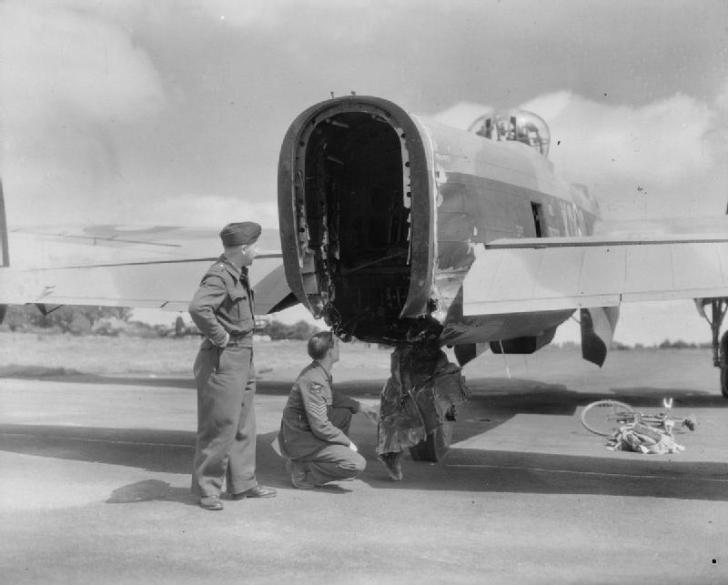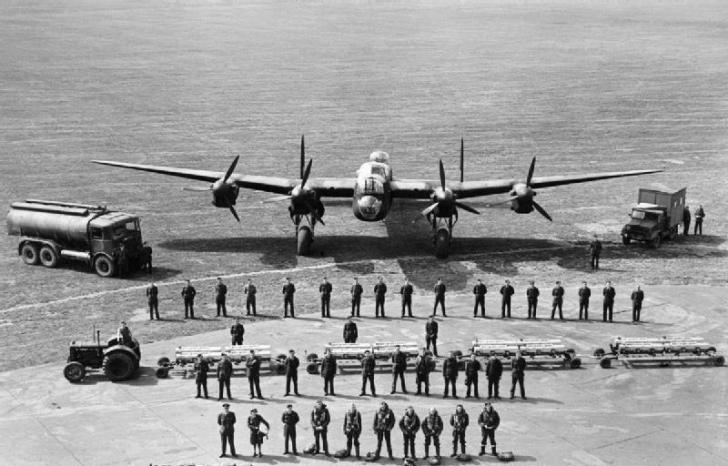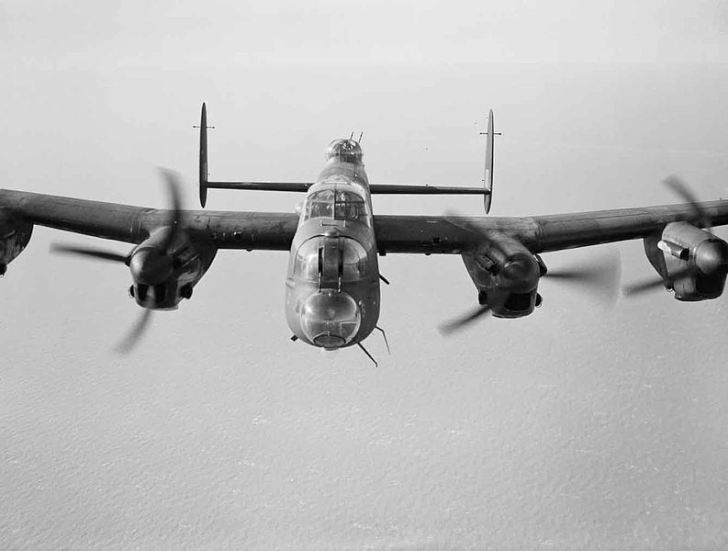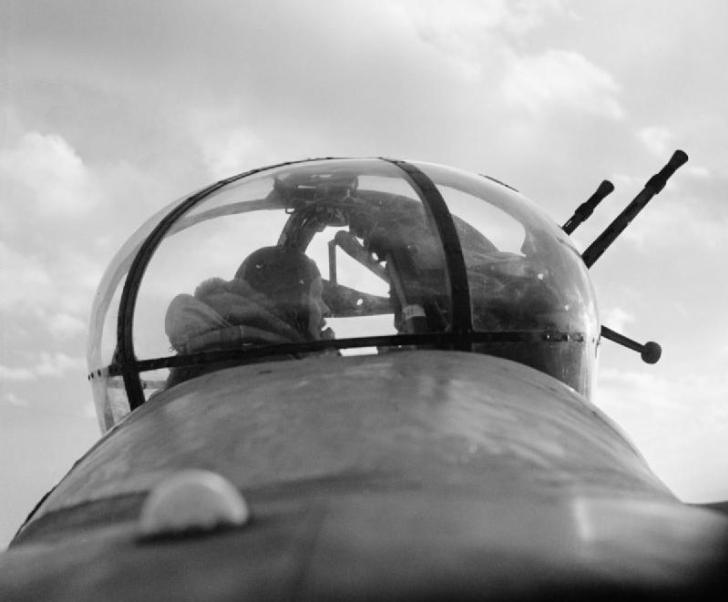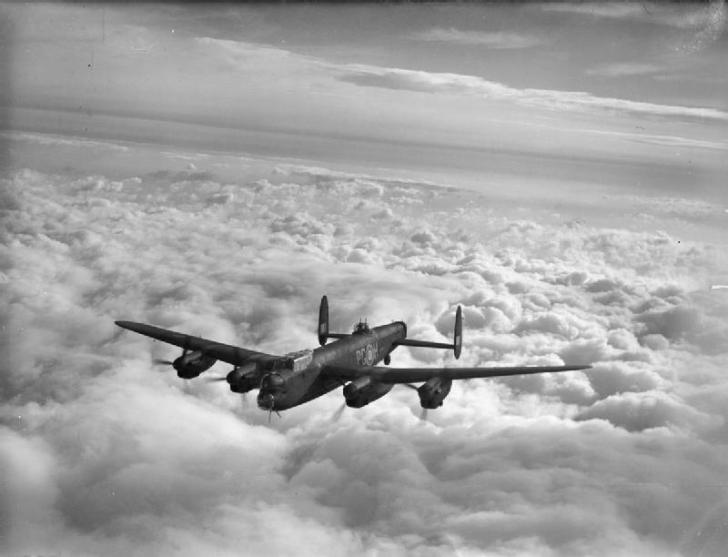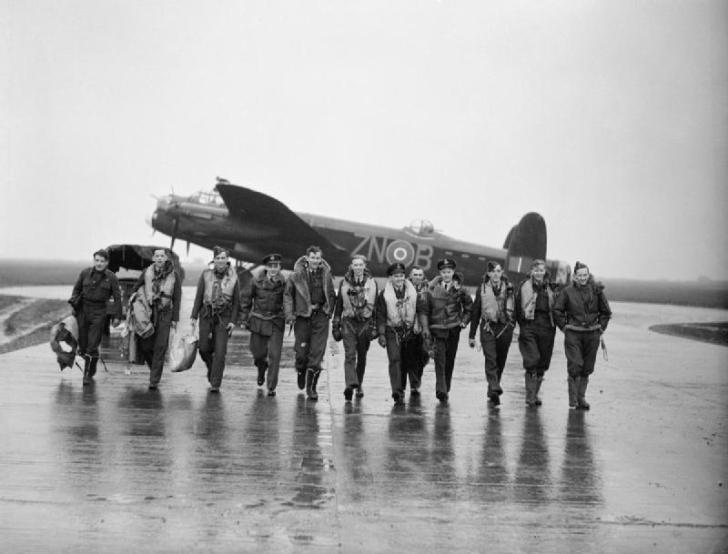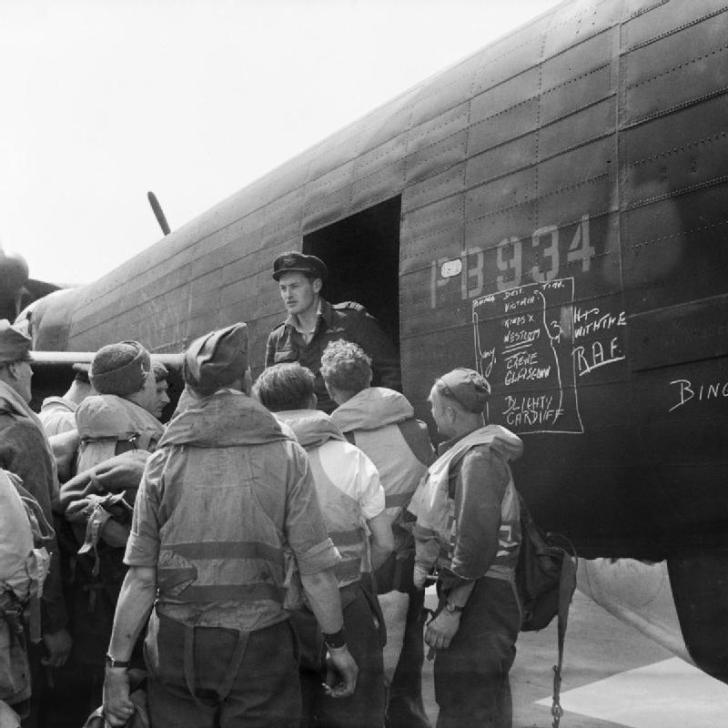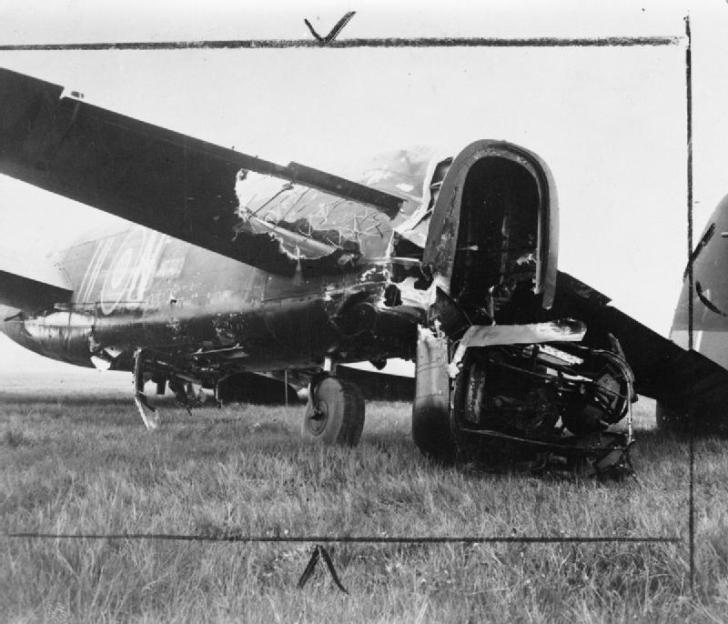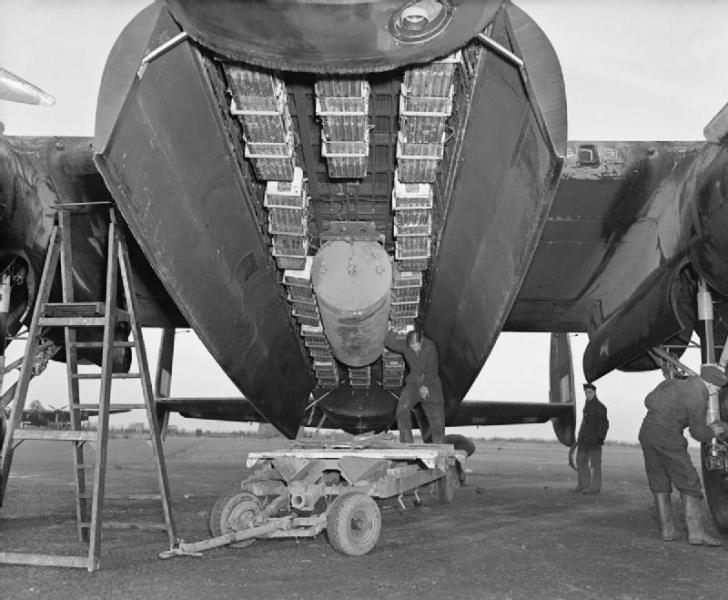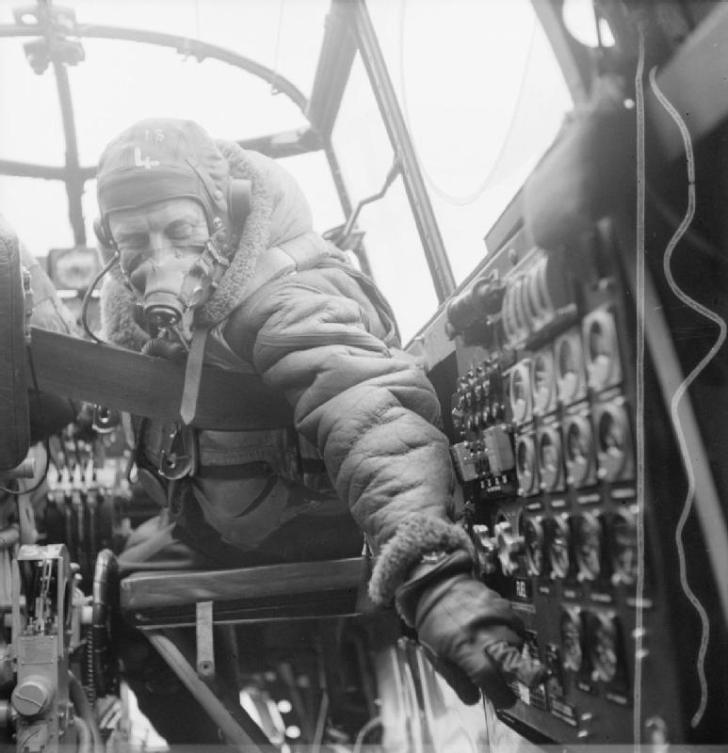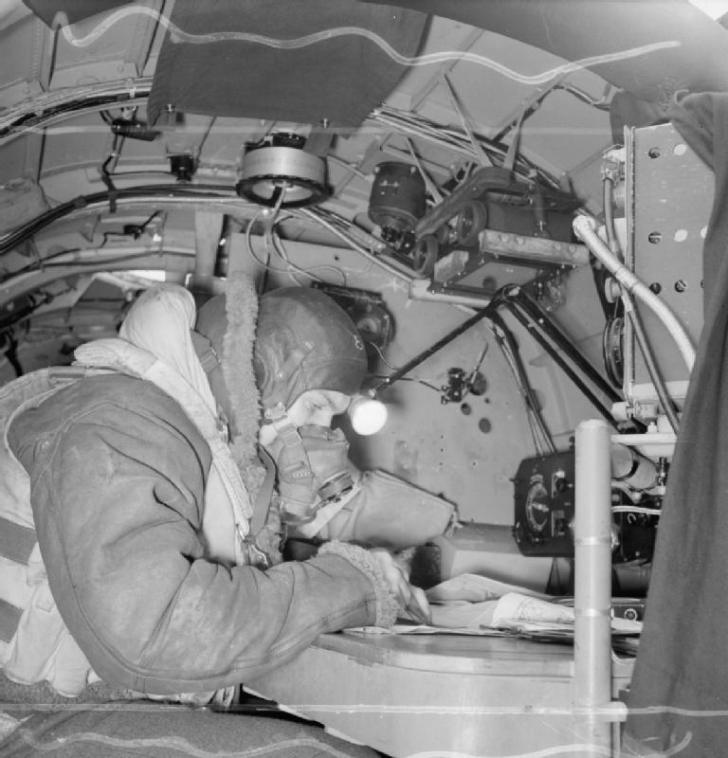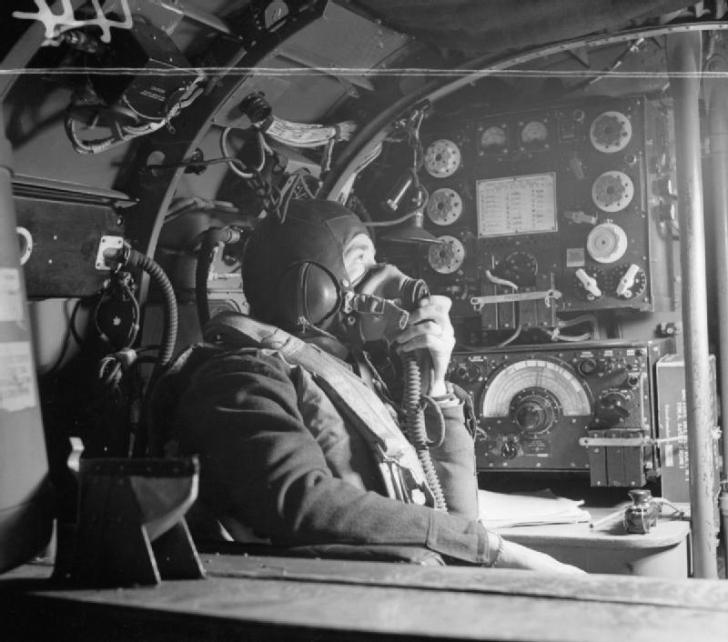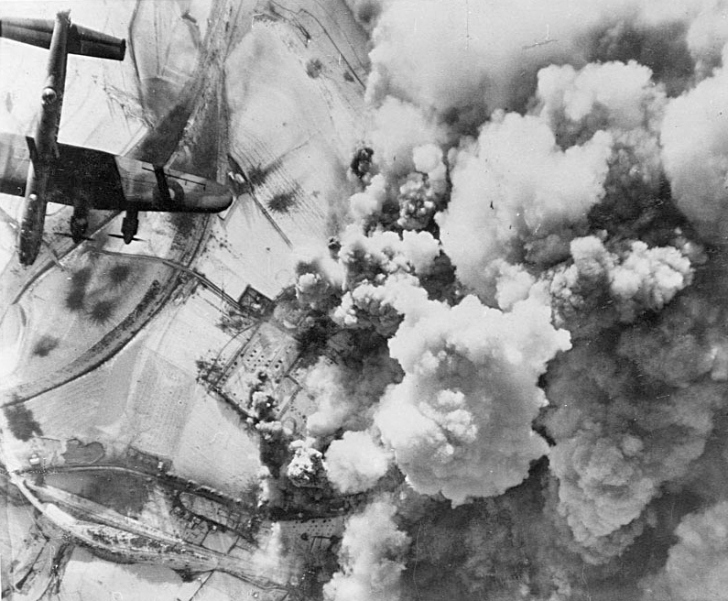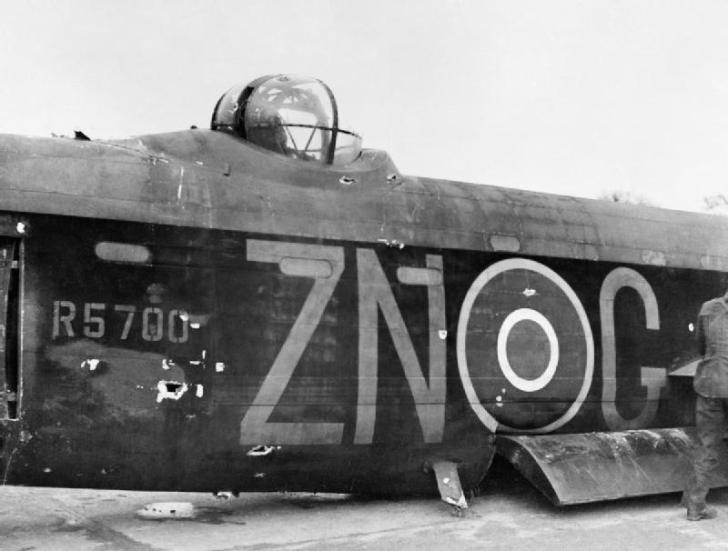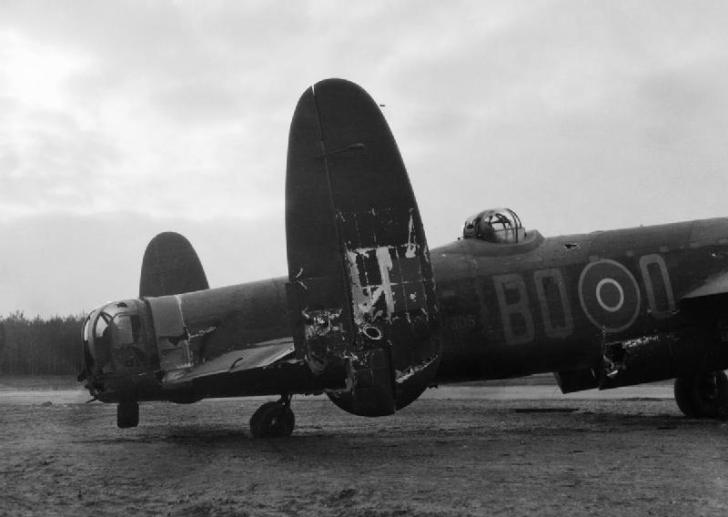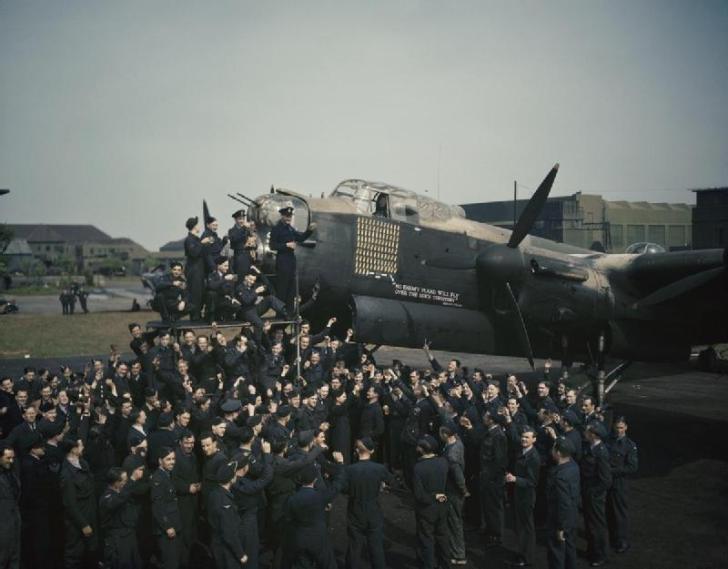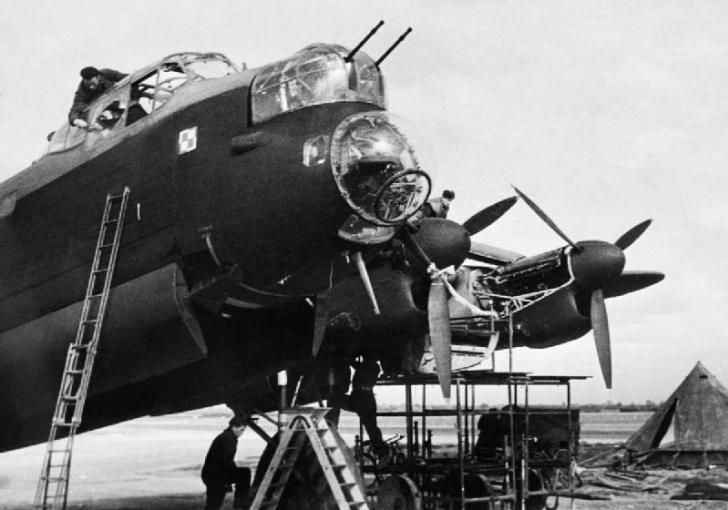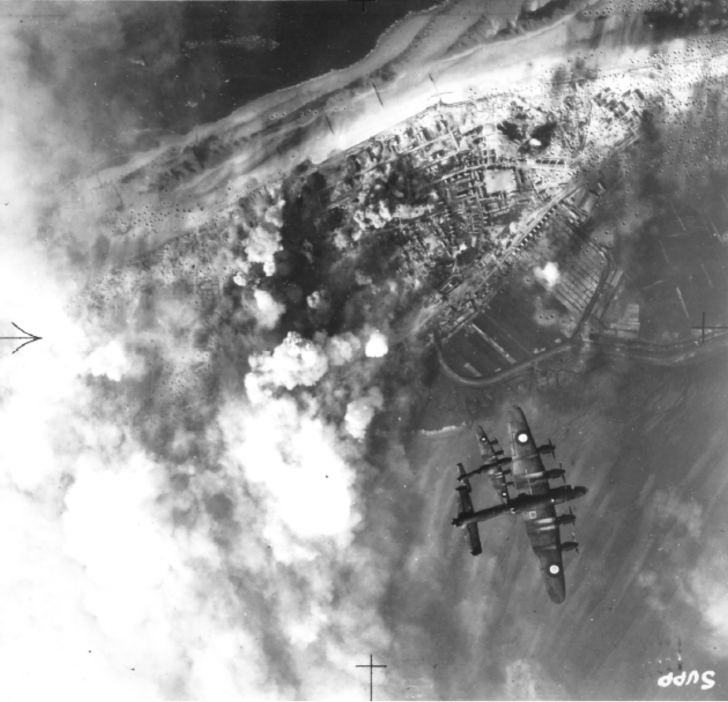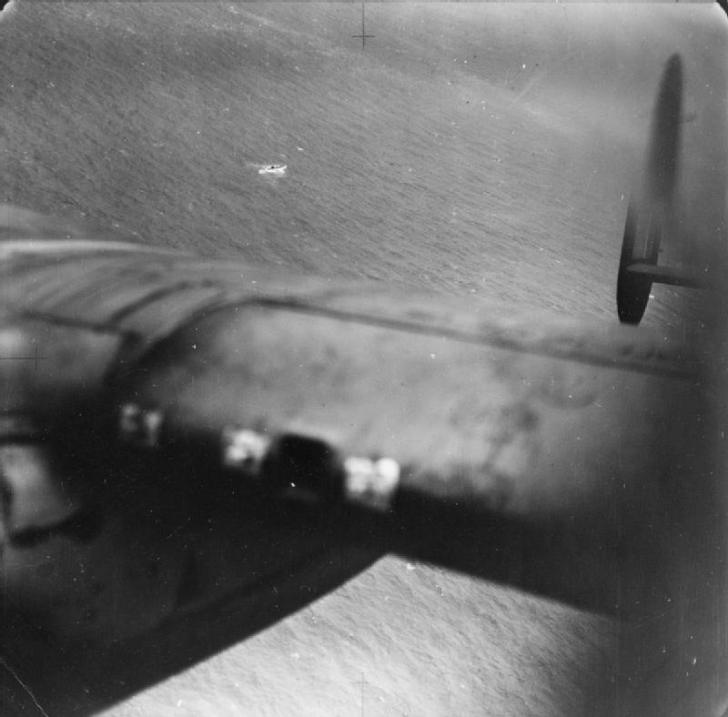One of the most iconic planes of the Second World War, the Avro Lancaster. Britains premier four-engined heavy bomber of which over 7,000 were built.
The Lancaster entered service with RAF Bomber Command in 1942 and flew 156,000 sorties, dropping over 608,612 long tons of bombs. Being able to carry 14,000 lb of normal bombs and even the 22,000 lb grand slam bomb it was this bomber that laid waste to German industry, rail yards, bunkers, and cities.
It also was the Lancaster that was used in the Dambusters mission, dropping bouncing bombs that destroyed dams in the Ruhr river.
Seventeen Lancasters survive to this day, two of the are airworthy and a third being prepared for flight.
Photograph looking back over the starboard wing of a Lancaster of No 61 Squadron, Bomber Command, after an attack on U-751 in the Bay of Biscay, 17 July 1942. The U-boat had been attacked and crippled by a Whitley of No 502 Squadron earlier, before being finally sunk by depth charges dropped by the Lancaster.
Back at their base, East Wretham, Norfolk, two members of the crew of Avro Lancaster B Mark II, DS669 ‘KO-L’, of No. 115 Squadron RAF, examine the rear of their aircraft, where the rear turret, with its unfortunate gunner, was sheared off by bombs dropped from an aircraft flying above, during a raid on Cologne on the night of 28/29 June 1943.
The personnel required to keep one Avro Lancaster flying on operations, taken at Scampton, Lincolnshire. Front row (left to right); flying control officer, WAAF parachute packer, meteorological officer, seven aircrew (pilot and captain, navigator and observer, air bomber, flight engineer, wireless operator/air gunner and two air gunners): second row, twelve flight maintenance crew (left to right; n.c.o. fitter, flight maintenance mechanic, n.c.o. fitter, five flight maintenance mechanics, electrical mechanic, instrument repairer, and two radio mechanics): third row, bombing up team; WAAF tractor driver with a bomb train of 16 Small Bomb Containers (SBC), each loaded with 236 x 4-lb No. 15 incendiaries and, behind, three bombing-up crew: fourth row, seventeen ground servicing crew (left to right; corporal mechanic, four aircraft mechanics, engineer officer, fitter/armourer, three armourers, radio mechanic, two instrument repairers, three bomb handlers, machine gunbelt fitter): back row (left to right); AEC Matador petrol tender and two crew, Avro Lancaster B Mark I heavy bomber, mobile workshop and three crew.
A Lancaster Mk III of No. 619 Squadron on a test flight from RAF Coningsby, 14 February 1944.
A No 57 Squadron mid-upper gunner, Sergeant ‘Dusty’ Miller, ‘scans the sky for enemy aircraft’ from a Lancaster’s Fraser Nash FN50 turret. This image was part of a sequence taken for an Air Ministry picture story entitled ‘T for Tommy Makes a Sortie’, which portrayed the events surrounding a single Lancaster bomber and its crew during a typical operation.
Lancaster B Mark III, LM449 PG-H, of No. 619 Squadron RAF based at Coningsby, Lincolnshire, in flight.
Aircrew of No. 106 Squadron photographed in front of a Lancaster at Syerston, Nottinghamshire, on the morning after the raids on Genoa, 22-23 October 1942. Crews of No 106 Squadron photographed in front of a Lancaster at Syerston, Nottinghamshire, on the morning after the raids on Genoa, 22-23 October 1942. Fourth from the right is Pilot Officer David Shannon, a future ‘Dambuster’ and leading light of No 617 Squadron.
British former prisoners of war prepare to board an Avro Lancaster B Mark I, PB934, of No. 582 Squadron RAF at Lubeck, Germany, for repatriation to the United Kingdom.Canadian PO (A) S Jess, wireless operator of an Avro Lancaster bomber operating from Waddington, Lincolnshire carrying two pigeon boxes. Homing pigeons served as a means of communications in the event of a crash, ditching or radio failure.
Badly Damaged Lancaster Is Brought Back Safely After Attack on Mailly Le Camp
The bomb load most commonly used for area bombing raids (Bomber Command executive codeword ‘Usual’) in the bomb bay of an Avro Lancaster of No. 57 Squadron RAF at Scampton Lincolnshire. ‘Usual’ consisted of a 4,000 impact-fused HC bomb (‘cookie’), and 12 Small Bomb Containers (SBCs) each loaded with incendiaries, in this case, 236 x 4-lb incendiary sticks.
Flying Officer J B Burnside, the flight engineer on board an Avro Lancaster B Mark III of No. 619 Squadron RAF based at Coningsby, Lincolnshire, checks settings on the control panel from his seat in the cockpit.Flying Officer P Ingleby, the navigator of an Avro Lancaster B Mark III of No. 619 Squadron RAF based at Coningsby, Lincolnshire, seated at his table in the aircraft.
Flying Officer P Ingleby, the navigator of an Avro Lancaster B Mark III of No. 619 Squadron RAF based at Coningsby, Lincolnshire, seated at his table in the aircraft.
Flying Officer R W Stewart, a wireless operator on board an Avro Lancaster B Mark I of No. 57 Squadron RAF based at Scampton, Lincolnshire, speaking to the pilot from his position in front of the Marconi T1154/R1155 transmitter/receiver set.
Aerial photograph of an attack by Royal Air Force Avro Lancaster bombers on St. Vith, Belgium, on 26 December 1944.
The damaged fuselage and mid-upper turret of Avro Lancaster B Mark I, R5700 ‘ZN-G’, of No. 106 Squadron RAF based at Syerston, Nottinghamshire, after crash-landing at Hardwick, Norfolk, following an attack by a German fighter over Essen. R5700, was among 60 aircraft taking part in the first “Oboe” raid on Essen on the night of 13/14 January 1943, when it was twice attacked by a Focke Wulf Fw 190 “Wilde Sau” night-fighter shortly after bombing the target. The aircraft was severely damaged, the rear gunner was badly wounded and the mid-upper gunner, Sergeant J B Hood, was killed, but the pilot, Sergeant P N Reed, managed to fly the crippled bomber as far as the USAAF base at Hardwick before executing a successful crash-landing. Three weeks later, Sergeant Reed and his crew failed to return from a raid on Hamburg.
The rear section of Avro Lancaster B Mark I, DV305 ‘BQ-O’, No. 550 Squadron RAF based at North Killingholme, Lincolnshire, seen at Woodbridge Emergency Landing Ground, Suffolk, after the severely-damaged aircraft crash-landed there following an attack by a German night fighter over Berlin on the night of 30/31 January 1944. In the course of the attack both the rear gunner and the mid-upper gunner were killed, and the bomb-aimer baled out having misunderstood orders. The pilot, Flying Officer G A Morrison, managed to bring the crippled aircraft back without any navigation aids.
Aircrew and ground staff of No. 467 Squadron, RAAF at RAF Waddington, UK, celebrate the completion of 100 operations by the Avro Lancaster R5868 ‘S for Sugar’ after its sortie on 11 – 12 May 1944 to a communications target in Belgium.
Ground crew servicing an Avro Lancaster of No 300 Polish Bomber Squadron RAF at Faldingworth, Lincolnshire.
One of the last great RAF-raids together with RCAF and FAFL against germany. This raid was intended to knock out the coastal batteries on this Frisian island which controlled the approaches to the ports of Bremen and Wilhelmshaven.
